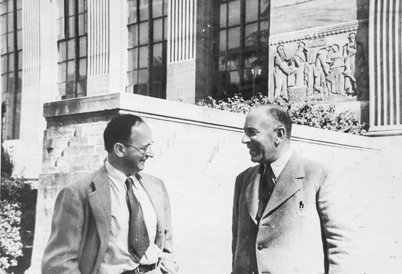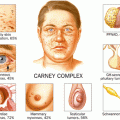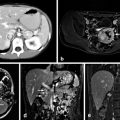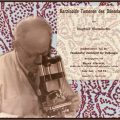Dr. Jan Wolff (April 25, 1925). Photo of young Dr. Wolff in laboratory
Born in Germany, Dr. Wolff was displaced to Holland at a young age as Hitler came into power. His father was a Jewish pediatrician, and his mother was Dutch. At age 12, he would be relocated again, this time to San Francisco, where his father would repeat his pediatric residency.
Dr. Wolff’s high school chemistry teacher kindled his initial interest in chemistry and science research. This interest would later inspire him to major in chemistry and biochemistry at University of California (UC) at Berkeley, the university where he would stay for his undergraduate, master’s, and doctorate degrees in physiology. He was drawn to Dr. Chaikoff’s laboratory because he offered a salary—a rare thing at the time—of US$ 100 a month. This was no small amount since tuition fees were US$ 25 per semester. Joining as an undergraduate student, Dr. Wolff spent a total of 4 years in Dr. Chaikoff’s laboratory.
Wolff’s accomplishments in the Chaikoff laboratory were made at a time when scientific research was grueling in comparison to modern standards. Dr. Wolff assembled his own Geiger tubes. To measure thyroxine, he digested thyroid glands from animals, performed an extraction with n-butanol, then distilled the liquid with a Chaney still. At first, the laboratory bombarded tellurium on a copper target with deuterons to create radioactive iodine .
Wolff’s relationship with Chaikoff was often challenging. Chaikoff was very demanding, but at the same time, he empowered his trainees to shoo him away if they were concentrating on an experiment—something a busy Dr. Wolff would often do. In addition to laboratory work, writing papers together was equally arduous. Always maintaining a high standard, Dr. Chaikoff insisted that all papers went through the English department. Ultimately, the results were routinely superb and the added effort would prove worthwhile. Chaikoff’s passion and drive were infectious, and propelled Wolff into excellence early in his career.
Following his time at UC Berkeley, Wolff went to medical school at Harvard, followed by a medical internship at Massachusetts General Hospital. During his internship, he realized that patient care always left him unsatisfied and perpetually curious about underlying mechanisms. Thus, he was drawn back to basic science research, and joined the National Institute of Health (NIH). At the NIH, after continuing thyroid studies, his later research focus shifted to the study of tubulin and microtubule assembly .
To this day, Dr. Wolff is frequently contacted to discuss the use of iodine in the event of nuclear accidents. His expertise was sought following hydrogen bomb testing at the Marshall Islands during the 1950s and after the Chernobyl accident in 1986. He was an early recruit to the clinical endocrinology branch of the National Institute of Diabetes and Digestive and Kidney Diseases (NIDDK), and later became the chief of the Endocrine Biochemistry Section of the Laboratory of Biochemistry and Genetics at NIDDK. Now retired from research, he continues to be academically active and teaches at the NIH .
Dr. Israel Chaikoff joined the UC Berkeley in 1930, after obtaining his PhD and MD degrees from the University of Toronto. During his time at the University of Toronto, on the same campus, Dr. Frederick Banting performed his series of experiments that led to the discovery of insulin in the 1920s. That discovery sparked Chaikoff’s interest in endocrine research, which focused on fat and carbohydrate metabolism. Chaikoff gained early recognition as an outstanding lecturer in endocrinology.


Dr. Israel Lyon Chaikoff (July 2, 1902–January 25, 1966; Born in London, England). Photo of Dr. Chaikoff ( left) with colleague Dr. Walter Griesbach
When Chaikoff arrived at Berkeley, the Department of Physiology was in its infancy. The faculty comprised one full professor and four assistant professors, all of whom been present for less than 3 years. Focused and determined, Chaikoff often worked on experiments well into the night. Until he married, he lived mostly in the Faculty Club.
His doggedness would prove very fruitful. By the end of his career, Dr. Chaikoff would contribute more than 400 publications. He also pioneered the use of radioactive isotopes in research, including I131 in thyroid metabolism and disease, P32 in phospholipid membrane turnover, and C14 in the study of hepatic steatosis. In addition to describing the Wolff–Chaikoff effect and other aspects of thyroid physiology, he made significant contributions to the study of adrenal hormones, fatty acid metabolism, and cholesterol synthesis. Chaikoff later become co-chairman of his department and received numerous accolades, including the Endocrine Society medal in 1958. Today, the Chaikoff Memorial Award is given each year to an undergraduate student at UC Berkeley who distinguishes him or herself in the area of molecular and cell biology.
Chaikoff was afflicted with severe asthma. Despite his condition, he continued to lecture, mentor his graduate students, and conduct world-class research. The condition also did not prevent him from enjoying one of his most beloved meals once a month, spaghetti al pesto, despite the mild reaction that would inevitably follow. Sadly, Chaikoff’s career was cut short in 1966, when he passed away from status asthmaticus. Chaikoff’s legacy lies not only in his discoveries, the significance of which echoes into modern day, but also in his teachings, which shaped many great scientists, including Dr. Wolff, Dr. Isadore Perlman, Dr. Gordon Tomkins, and many others.
Discovery of the Wolff–Chaikoff Effect
In the 1940s, iodine was available to the public and had been used to treat thyroid disease and other ailments for some time before Wolff and Chaikoff made their discovery . Lugol’s solution, a solution of elemental iodine and potassium iodide, was first made in 1829. It was used to treat hyperthyroidism, though its mechanism of action was poorly understood. Surgeons of that era also used it to reduce thyroid vascularity prior to thyroid operations. Iodine deficiency as a cause of goiter formation and cretinism gained wide recognition in the late eighteenth and early nineteenth centuries. This led to the development of iodized salt in Switzerland. Subsequently, iodized salt was championed in the USA by the University of Michigan, and widely distributed throughout the USA by the Morton Salt Company in 1924 .
Stay updated, free articles. Join our Telegram channel

Full access? Get Clinical Tree








